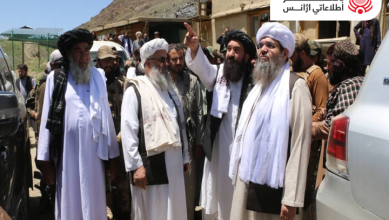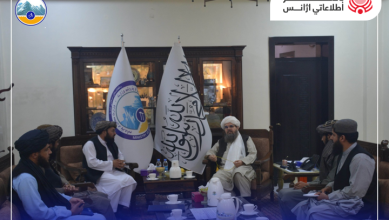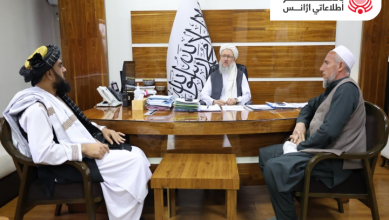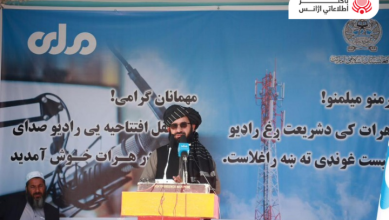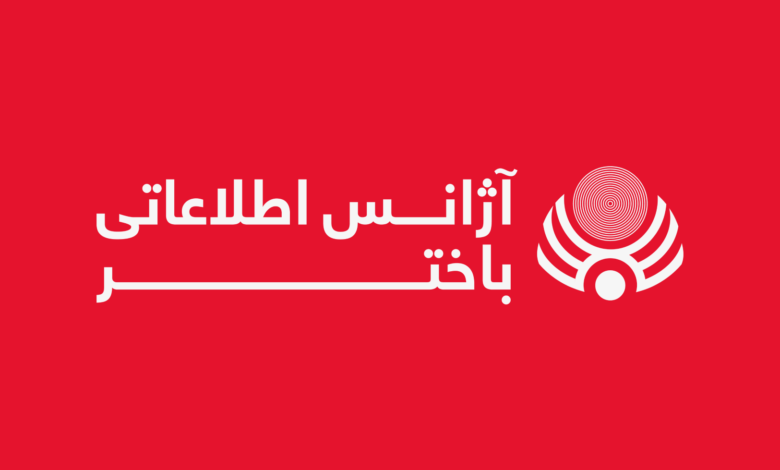
Monday, July 31, 2017
Kabul (BNA) Findings of the Center for Protection of Afghan Women Journalists (CPAWJ) indicated that the number of women journalists working for media is reducing, particularly at the provincial level in the recent years as war and violence intensify in Afghanistan.
Women journalists are the victims of growing conflicts more than their male counterparts are the victims of violence, both out of home and at the worksite, in the insecurity-plagued nation.
The CPAWJ has interviewed with 33 Afghanistan prominent media outlets, 18 TVs, 9 radios, 2 news agencies and 4 dailies as well as four media and journalists supporting organizations including Journalists Safety Committee, Nai or Supporting Open Media in Afghanistan, National Union of Afghanistan Journalists (NUAJ) and Afghanistan Independent Journalists Association to find how many female media staff are still daring any kinds of threat to continue works as media staff.
All 813 women including 331 professional female journalists are now working in the intertwined audio-visual and print media, the poll found. The finding shows that journalists’ main concentration is first in Kabul and then in Herat and Balkh provinces.
The MOBY Group, with 150 female staff, Radio Television of Afghanistan (RTA), Afghanistan National TV, with 140 female staff, Banu International TV Network, 50 women workers, Kleed Group 40 women staff, private Khurshid TV 38 female workers are leading hundreds of other audio-visual and print media in the country.
Considering growing challenges before the women journalists, the Center for Protection of Afghan Women Journalists (CPAWJ) has taken in mind to know how many female journalists and staff are currently working for media all over the country. Lack of statistic from the exact number of female journalists can highlight a defection of the ongoing nascent democracy.
Having an accurate number from women journalists working for media all over the country, could be the first step to find what problems they are facing in both their worksites and inside the society and most importantly to have their demands taken to the related organs.
The CPAWJ has tried its best to make sure how many female journalists are still engaged in work for media around the country. The entity tried to know the exact figure through launching direct and indirect conversation with the related officials of the Ministry of Information and Culture, media outlets and journalist supporting institutions as well as using guidebooks from the Nai – Supporting Open Media in Afghanistan, which is one of the only statistical source in the country.
“As no entity, including the ministry of information and culture has officially released precise figure and statistic about the women journalists and media staff in Afghanistan, the CPAWJ took this responsibility to at least could find a possibly specific number from the country’s media women by referring to various sources and release them,” said Farida Nekzad, the manager adding however they understand that the given figure was not complete but it could be a small effort to help request all media activists and journalists supporting entities to help us complete the statistic.
The Ministry of Information and Culture is the only government source to have the precise number of the media women, but Sayed Hussain Fazel Sanchraki, deputy to the ministry’s publication affairs, said: “The ministry’s publications office has no accurate number of the entire media women, but has arranged a list of female media mangers only.” He said the ministry of information and culture would soon start working on a plan to find the exact number of the female journalists in the country.
On her turn, Najiba Maram, director of the publication affairs of the ministry rejected if her office has an updated figure from the female media outlets or those media managers, but said any list, if available belonged to a survey launched in 1382 (2003). “Since then, some media stopped their activities or legally deactivated,” said Maram who called the main reason behind failure to have the exact number of the female journalists was noncooperation of media in-charges.
“We sent them several written messages to share with us a list of their media women, but yet to receive response from any of them,” said the publication director of the ministry.
Unfortunately, the list (however from some media outlets) because of not being up-to-date lacked validity.
Another reliable source which is a manual released by Nai—Supporting Open Media in Afghanistan, with Mujib Khelwatgar as Chief Executive saying the handbook containing the exact list of the media outlets has been provided in 1390 (2011) covering countrywide media, with the number of women journalists specified.
“The guidebook had been published in 1390 – 1392 (2011 – 2012), but is now up to dated and released in the institution’s website, and is being online accessed with the final up to date in 2016,” said Khelwatgar.
He said 50 media including 10 radio stations and 2 TV networks have been activated since that time, but 170 media have been closed in the recent four years.
According to the Nai published guidebook, 2172 women are currently busy to work for media. But Khelwatgar said the final survey, his institution conducted in 2017, indicated that around 12,000 media workers, including 1,800 to 2,000 women are working in various fields, are available in the country, mostly based in the capital Kabul.
Fahim Dashti, chief executive officer to the Afghanistan National Journalist Union (ANJU) said: “There is a general estimation that up to 12,000 people, nearly 25 percent of them women, including journalists and staff are working for media in Afghanistan. And the available number in the union, strengthens this 25 percent estimation.”
There are 2,000 media staff, with 450 women working in the union, but said there was no exact number to show how many women are roughly working as journalist and how many others in other fields.
F. Makhdoom

